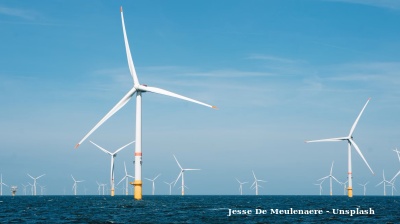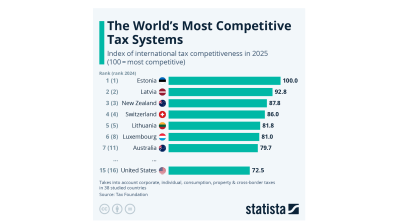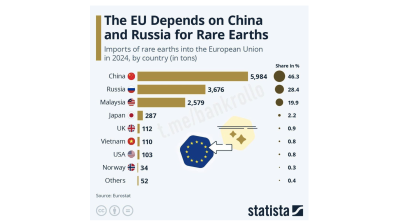A widespread blackout that plunged Spain, Portugal, Andorra and parts of southern France into darkness this week was caused by extreme weather events that saw the renewable power system collapse, as now the third disaster season gets under way with the biggest climate-related energy infrastructure failure ever.
The rapidly accelerating Climate Crisis is causing flooding, storms, hurricanes and other natural disasters, but this is the first time the off the charts weather has caused a major infrastructure failure. The power sector of three countries almost completely collapsed as it was overloaded thanks to extreme variations in temperature across the Iberian Peninsula, according to the authorities.
Spain's grid operator denied later on April 30 that dependence on solar power was to blame for the country's worst blackout, although offered no alternative explanation, Reuters reported.
Prime Minister Pedro Sanchez’s opponents pointed the finger at low investment in a system that increasingly relies on intermittent solar and wind power. A government investigation has been launched and Sanchez has not ruled out foul play or a cyberattack, although that was dismissed by part-state-owned Spanish grid operator REE.
REE, which is headed by former Socialist minister Beatriz Corredor, has narrowed down the source of the outage to two separate incidents of loss of generation in substations in southwestern Spain, but says it has yet to identify their exact location and that it is too early to explain what caused them, Reuters reports.
REE warned in a report released in May 2024 there was a risk of a major outage, highlighting that renewable generation was spread across the country but connect to substations that were not designed to handle high volumes of generation. Spain needs to invest in load-shedding relays to act as shock absorbers when there's a plunge in generation to cope with sudden oscillations in frequency, REE said.
Officials described the blackout as one of the most severe power outages in Europe in years. The failure, which disrupted transport and telecommunications across major cities such as Madrid, Lisbon and Barcelona, was linked to instability in the region’s high-voltage transmission system and an over-reliance on renewable energy.
Grid operators in the affected countries are working to restore power, but the blackout, described by Spain’s transmission system operator Red Eléctrica de España as a “collapse of the Iberian electricity network,” has raised fresh concerns about the resilience of Europe’s power systems during periods of high renewable generation.
Portuguese TSO REN initially pointed to damage on a French high-voltage line caused by fire as a possible trigger, but later said the event was driven by “extreme temperature variations inside Spain” that caused “anomalous oscillations in 400-kV lines.” The Government of Portugal confirmed that the origin of the incident was outside its borders, “apparently, in Spain,” Balkan Green Energy News (BGEN) reports.
European Commission Executive Vice President Teresa Ribera, who also oversees the EU’s energy transition, said there were no signs of foul play. “There are no indications that any kind of sabotage or cyberattack” caused the outage, she stated.
Energy strategist Gerard Reid noted that the event coincided with negative prices in Europe’s wholesale electricity markets, a symptom of imbalances between generation and demand. “We still don’t know the cause but it looks like problems at the Spanish-French power interconnector led to the Spanish grid operator islanding their power system and I would say at this point they lost control,” he told BGEN.
Reid added that restarting the system has proven difficult due to the absence of conventional power plants at the time of the blackout and a lack of battery backup power.
The blackout follows record highs in Spain’s renewable power generation. On April 16, the grid was fully supplied by wind and solar for the first time, reaching 100.6% of demand, and on April 21, solar power accounted for 78.6% of domestic demand at its peak, BGEN reported. Just before the system crashed, solar energy accounted for 53% of electricity production, wind for almost 11% and nuclear and gas for 15%, according to REE data.
One of the problems was that there was not enough backstop stable power, such as gas and nuclear, to handle the sudden fall of power generation, an industry source told Reuters. "The problem wasn't so much the massive entry of renewables, rather the lack of synchronous generation," the source said.
While European electricity grids are generally robust, the growing share of intermittent renewables and limited storage capacity have created new vulnerabilities. Similar grid incidents in recent years, including a blackout affecting parts of the Western Balkans and Croatia last summer, have further highlighted the need for modernised infrastructure.
This story has been updated to include the government’s denial that renewables were to blame for the blackout.
bneGREEN

The Arctic and Antarctica record "off the charts" heat as polar warming accelerates
Parts of both the Arctic and Antarctic have experienced historically high temperatures in recent weeks, with weather stations in East Antarctica recording record-breaking warmth for the month of October, alarming climate scientists.

Giant glacier chunk breaks away in Tajikistan, mountain villages put on alert
Situation serves as reminder that climate crisis threatens to wreak havoc in Central Asian country.

Singapore’s green pivot – headline grabbing but still limited
Forays into offshore wind via regional cooperation with neighbours, and forward-looking bets on hydrogen and low-carbon fuels are making headlines, but the scale required to wean a heavily gas-dependent system off fossil fuels is still daunting.

North Macedonia's Skopje tackles mounting waste and rodent crisis
Locals say the problems in Skopje's Centar municipality worsened during the local election period when political campaigning took precedence over maintenance.




